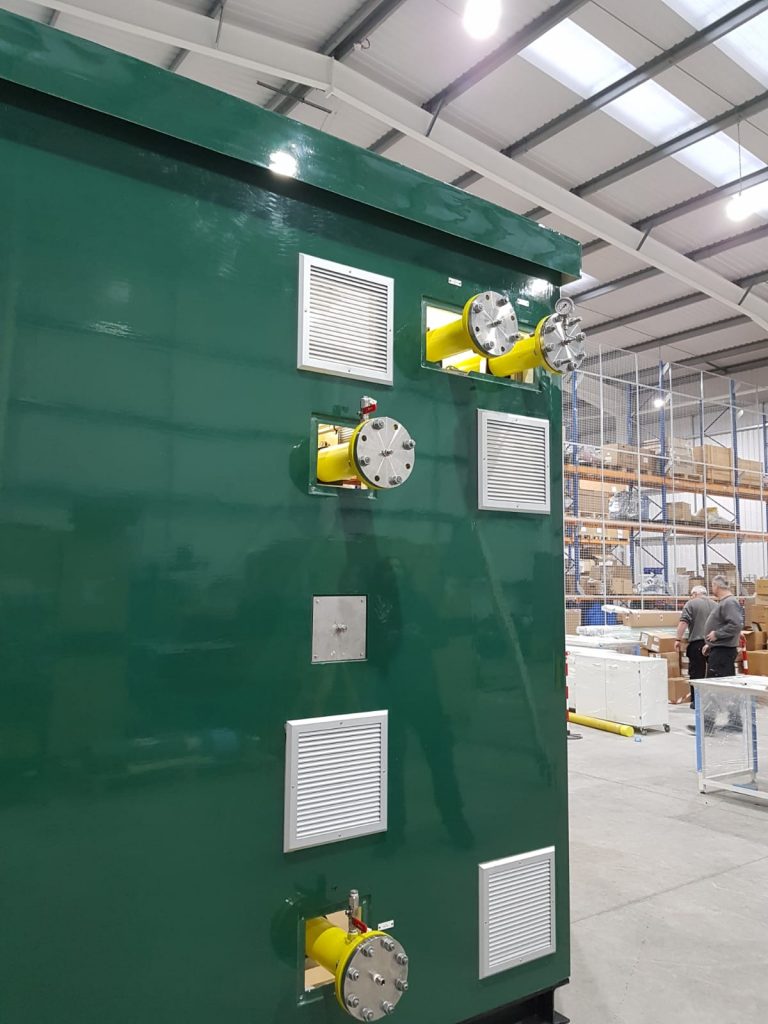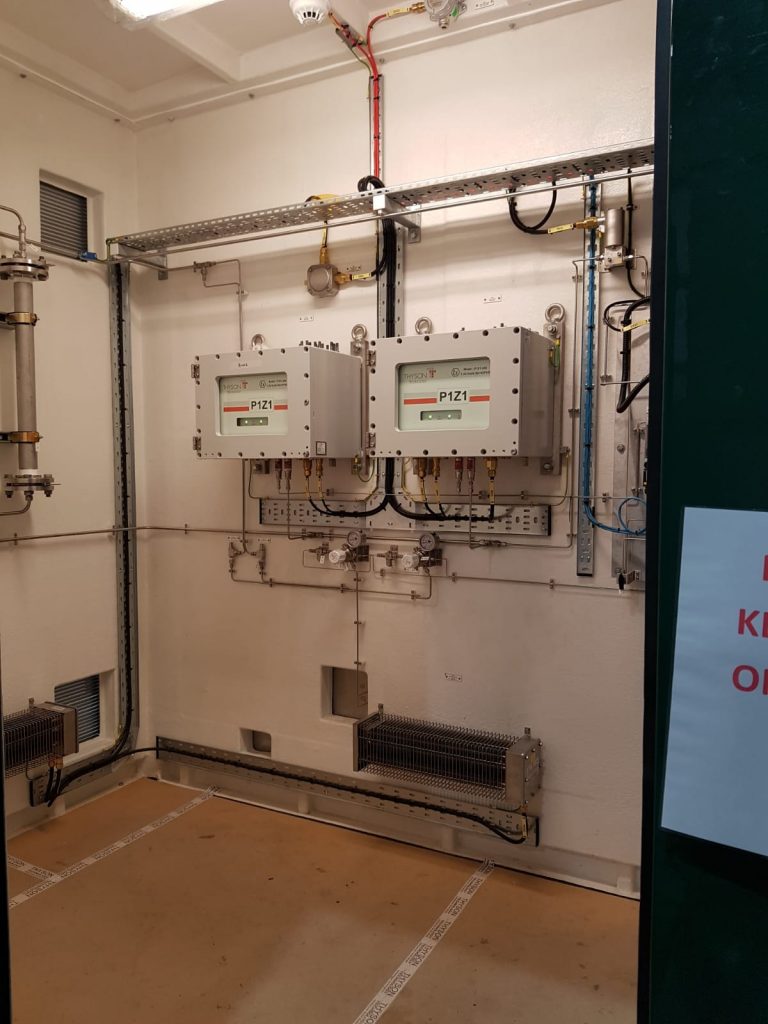The HyDeploy project has hit a key milestone in its journey to deliver the first public trial of blended hydrogen in the village of Winlaton, near Gateshead.
One key focus in recent months has been the design and build of the Hydrogen Grid Entry Unit (HGEU). The HGEU is a specialist piece of equipment that has been designed to control the blend rate of the hydrogen. It ensures that no more than 20% hydrogen is added to natural gas from the distribution network. It does this by monitoring the incoming gas quality and flow of natural gas to analyse how much hydrogen can be added. Once the hydrogen is added, the gas is then analysed again to see if it is still within the specification of GSMR. The design is based on the unit that is currently in use for the first phase of HyDeploy, at Keele University.
Following the completion of the build, along with Northern Gas Networks Electrical Commissioning Engineer Fayaz Patel, I recently attended the Factory Acceptance Test (FAT) of the HGEU hosted by the manufacturer, Thyson Technology Ltd based in Ellesmere Port, UK.
The aim of a FAT is to demonstrate, as far a reasonably practicable, that the unit operates as per its design. Simulations are carried out to test safety functions and operability of the unit. Any ‘snags’ identified during the test are logged and then corrected before it’s shipped to site.
We were delighted that after a successful FAT the unit will now be delivered to our site at Low Thornley, near Winlaton for installation and commissioning in the near future. Our current plan is that the demonstration to the 670 homes in Winlaton will start in spring, subject to the HSE granting the exemption we need to supply a 20% hydrogen blend, which we are hoping will be in February.
By Adam Madgett, Northern Gas Networks’ Project Manager for HyDeploy Winlaton




